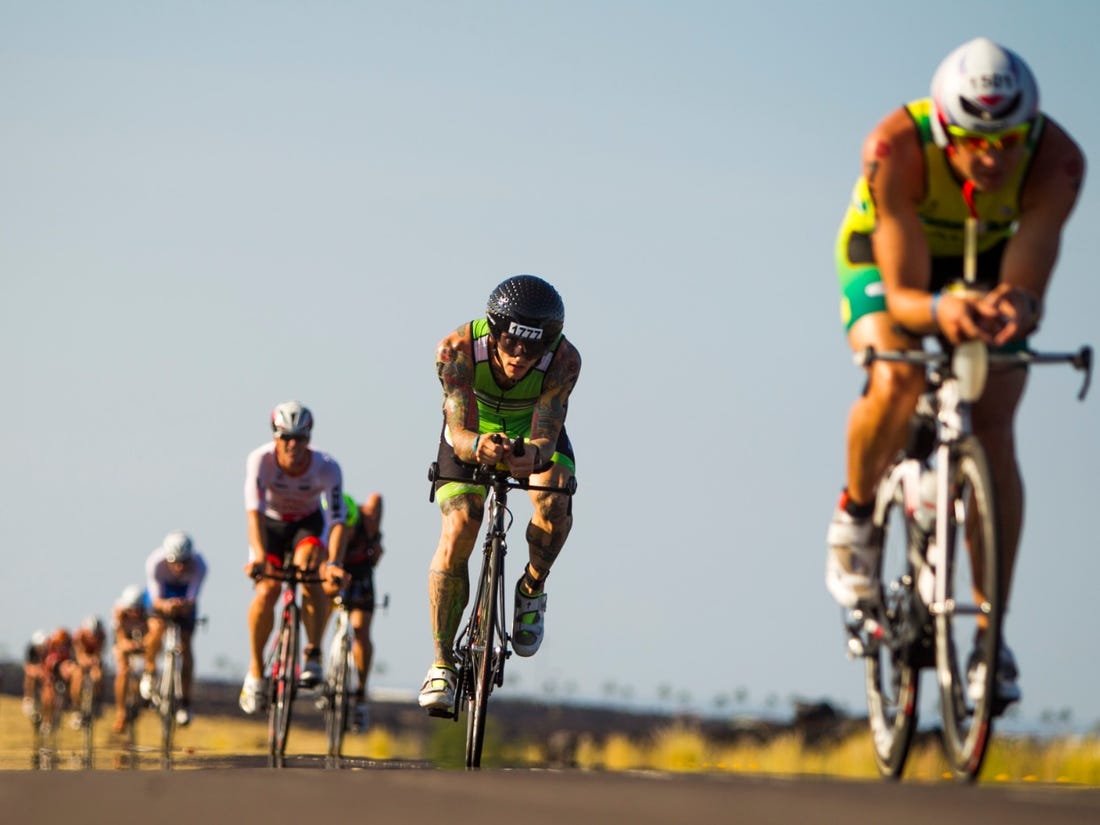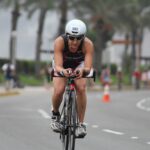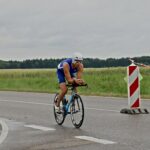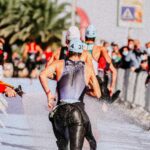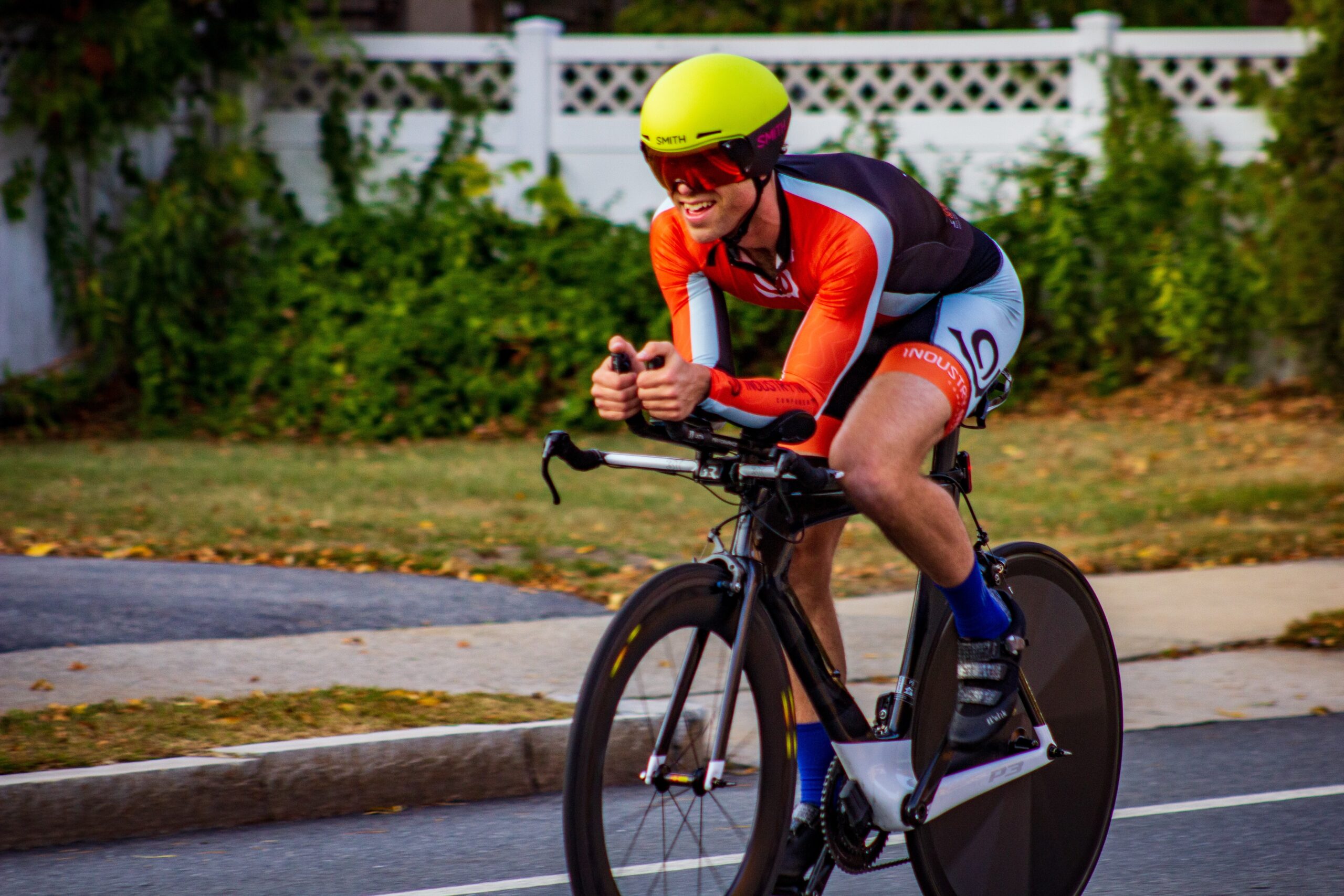Focus may be the most misunderstood mental “muscle” in the sports world and this misunderstanding can be a real challenge for triathletes. Most triathletes think of focus as concentrating on one thing for a long time. In fact, many years ago, a former world champion told me that she improved her focus by staring at her swim goggles for ten minutes a day. She may have believed that, but, given the complexity of triathlon, it probably didn’t help much. But triathlon is such a challenging sport because it requires much more than a singular focus on one thing.
Let’s start with a basic understanding of what focus means. Simply put, focus involves paying attention to your internal and external world. In triathlon, focus means paying attention to everything that impacts your training and competitive efforts. The flip side to focus is distraction, that is, focusing on aspects of your internal or external world that either take your mind away from what will help you perform your best or actually interferes with your efforts.
Prime focus involves focusing only on things that will help you perform your best and avoid distractions that hurt performance. Prime focus in triathlon can include external cues such as your opponent, the score, time remaining, and conditions. It can also include internal cues such as your technique, tactics, confidence, intensity, and emotions. Prime focus also gives you the ability to adjust your focus internally and externally as needed during a performance.
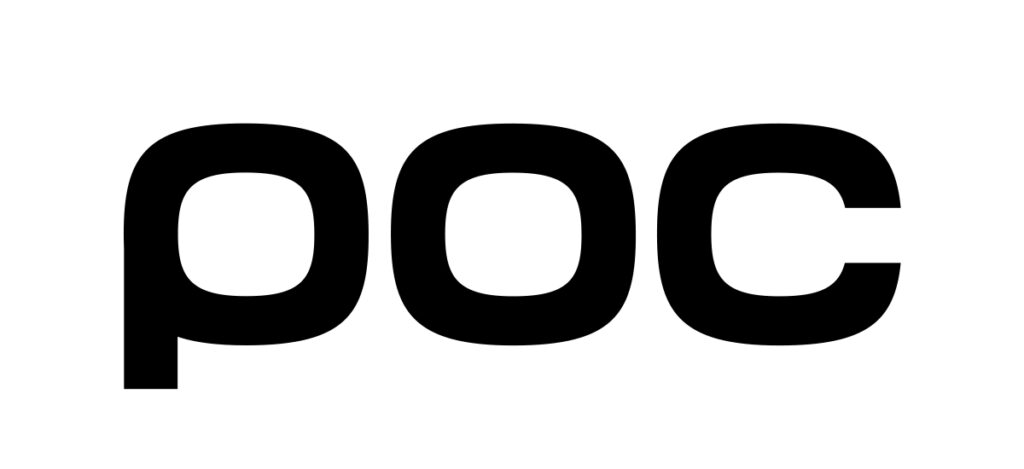
For example, a triathlete first focuses internally to identify a plan for the day’s race. As the start of the swim approaches, her focus shifts externally to the course to spot the buoys. During the swim, her focus shifts back and forth from internal (e.g., pace, technique) to external (e.g., buoys, other swimmers). Approaching the swim exit and T1, her focus moves to a smooth transition to the bike and settling her body down after the exertion of the swim. This “dance” of focus continues through the bike, T2, and the run until she crosses the finish line.
Poor focus, in contrast, involves focusing on internal and external cues before and during a race that distract you from performing your best. There are two types of harmful cues. Interfering cues are those that will directly hurt your performance such as negative thoughts, anxiety, or concern over other competitors. Irrelevant cues are those that simply distract you from an effective focus including what you’ll have for dinner tonight or the project that you must finish by tomorrow.
“The successful warrior is the average man, with laser-like focus.” Bruce Lee, martial arts legend
Value of Focus
Prime focus has several essential benefits in your training and competitive efforts. First, you are far more effective in your performances because you are focused on what you are supposed to perform your best and, as a result, will be more likely to execute well. You can see how this aspect of focus is so important for both training and races. Second, you are more efficient in your training because prime focus is a key component of quality training. The more you are focused on what you need to improve, the better and faster you will improve. Finally, you will be more consistent in your training and competitions because the more consistent your focus, the more consistent your effort, execution, and performances.
You should have three goals as you develop your focus capabilities. First, to identify those things, both internally (e.g., positive thoughts and emotions, physical sensations) and externally (e.g., course, conditions, other competitors), that you need to focus on to perform your best. Second, identify the internal (e.g., negative thoughts and emotions, muscle tension, pain)) and external (e.g., other competitors) distractions that prevent you from focusing effectively. Third, actively and consistently focus on the good things and block out the distractions.

Obstacles to Prime Focus
There are common aspects of triathlon that can act as obstacles to prime focus. First, the most basic barrier to focusing effectively is distractions that arise in your own mind or in your immediate surroundings. Whether negative thoughts in your mind, anxiety felt in your body, teammates talking too much, or your coach giving you too much feedback, these distractions fill your mind with clutter that prevents you from focusing on what you need to do to perform your best.
Second, it is difficult to focus effectively if you don’t have a clear process, that is, you don’t know what to focus on. You want to develop an unambiguous understanding of what precisely you want to focus on to perform your best in training and races. This clear process may include technique, pace, and effort in training, and your race plan, the course, and conditions on race day. With this clarity of process, you can then direct your focus toward those identified areas that will result in good performance.
Third, the stress you experience before and during races, particularly important ones, also prevent effective focus. Stress impacts your focus in several ways, both mentally and physically. The stress reaction has the effect of narrowing your focus onto that thing that is causing the stress, in this case, a big event. You develop tunnel vision to the extent that all you think about is the enormity of the race rather than widening your focus onto more important aspects of the performance such as your preparations and race strategy. Stress also produces physical changes that are uncomfortable, such as muscle tension and increased pain, that further distract you by directing your focus inward onto these physical expressions of stress.
“Starve your distractions and feed your focus.” Unknown
Focus Style
One of the most important developments I’ve made in my work in recent years is in understanding the importance of identifying triathletes’ “focus styles.” A focus style is a preference for paying attention to certain things, particularly under stress (e.g., before and during a race). Triathletes tend to be more comfortable focusing on some things and avoid or don’t pay attention to others in training and races. These tendencies can be a problem if your focus style leads you focus on some cues when it would be more effective to focus on others. Every triathlete has a dominant style that impacts all aspects of their triathlon efforts. This dominant style will surface most noticeably when they’re under pressure. The two types of focus styles are internal and external.
Internal focus style. Triathletes with an internal focus style perform best when they’re totally and consistently focused on their efforts during training or races. They need to keep their focus narrow, thinking only about their efforts. These triathletes tend to be easily distracted by activity in their immediate surroundings. If they broaden their focus and take their mind off their training or ace, for example, if they talk about non-triathlon-related topics with their coach or teammates before a race, they become distracted and will have trouble returning to their triathlon-specific focus as the race approaches.

External focus style. Triathletes with an external focus style perform best when they only focus on their efforts when they’re about to begin training or a race. At all other times, it is best for them to broaden their focus and take their mind off triathlon. These triathletes tend to overthink, become negative and critical, and experience competitive anxiety. For these triathletes, it’s essential that they take their focus away from triathlon when they’re not actually performing.
External focus style runs counter to beliefs held by many triathletes and coaches. They think that if triathletes are not totally focused on their sport, then they’re not serious about it and they won’t perform their best. Yet, for triathletes with an external focus style, they don’t want to think too much or be too serious because this causes them to lose confidence and become anxious. Rather, it’s best for these triathletes to distract themselves by, for example, talking to friends or listening to music, until just before a training workout or race, they narrow their focus onto their efforts. These triathletes perform their best when they’re not thinking too much about their sport and they simply allow their natural abilities and their preparations to emerge on their own.
Identifying and understanding your focus style. With this understanding, you need to identify what is your focus style. Are you a triathlete who needs to keep your mind on your efforts constantly for you to train or race well? Or are you someone who thinks too much and needs to keep your mind off triathlon until it’s time to train or race?
Recall past training session or races when you’ve performed well. Were you totally focused on your efforts or were you keeping your mind off triathlon until just before you began a workout or race? Also, recall past training sessions or races when you’ve performed poorly. Were you thinking too much or were you distracted by things going on around you? If you’re like most triathletes, a pattern will emerge in which you tend to perform best when you focus one way and you perform poorly when you focus another way.

You can also try different focus styles in training and then in less important races. For example, one day, try an internal focus style before you work out or race. Another day try an external focus style. As with when you recall past races, the chances are that a pattern will emerge in which one focus style works and the other one doesn’t.
This ability to manage your focus style well is most important in your normal training and race preparations. It is particularly important in big events where you may feel some pressure or anxiety. There is a tendency for triathletes under pressure to revert to a focus style that will interfere rather than help their performance. For example, if you’re someone who tends to overthink, you may find yourself turning your focus inward when the pressure is on. You may start to think too much and become anxious.
When you start to drift away from your ideal focus style, you must become aware that you’re moving away from it and that you need to take steps to redirect your focus back to the style that works best for you. Continuing the previous example, when you realize that you’re focusing internally too much, you should actively turn your focus outward by looking around and taking your mind off your sport. In my next article, I’ll share with you many focus tools you can use to help you maintain your focus and avoid distractions, as well as how you can maintain your ideal focus style for both training and races.
Do you want to take the next step in training your mind to perform your best in training and on race day? Here are four options for you:
- Read my latest mental training book: Train Your Mind for Athletic Success: Mental Preparation to Achieve Your Sports Goals.
- Listen to my Train Your Mind for Athletic Success podcast.
- Take a look at my online mental training courses.
- Schedule a 1:1 session with me.

